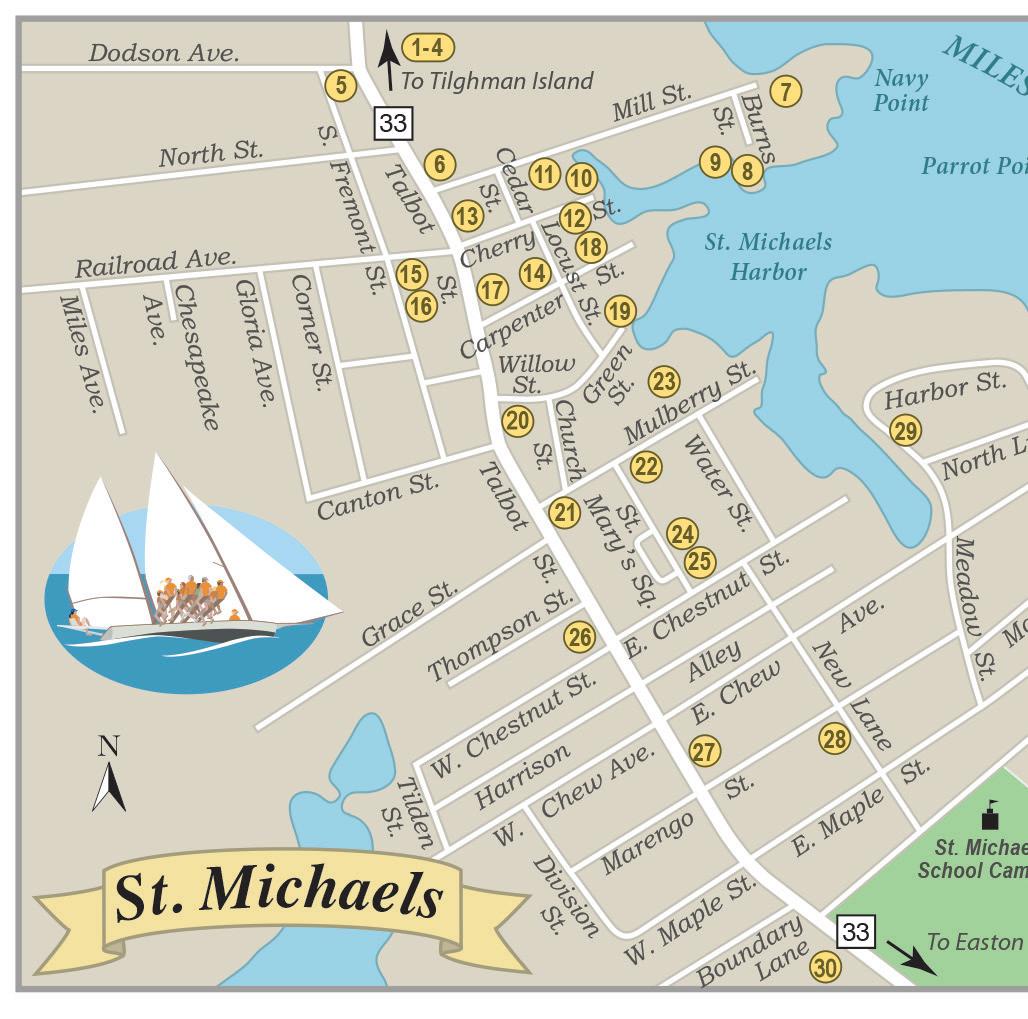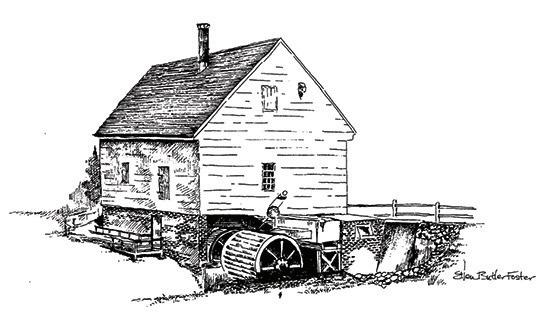
3 minute read
St. Michaels Map and History
© John Norton

On the broad Miles River, with its picturesque tree-lined streets and beautiful harbor, St. Michaels has been a haven for boats plying the Chesapeake and its inlets since the earliest days. Here, some of the handsomest models of the Bay craft, such as canoes, bugeyes, pungys and some famous Baltimore Clippers, were designed and built. The Church, named “St. Michael’s,” was the first building erected (about 1677) and around it clustered the town that took its name.
For a walking tour and more history of the St. Michaels area visit https://tidewatertimes.com/travel-tourism/st-michaels-maryland/.
trap to catch me a pet rabbit by propping an empty wooden Budweiser case on a stick.
At that time, I wouldn’t have noticed any historic markers around the island, but I believe there are a couple there now. One marks the home of a lady who had a big impact on Eastern Shore history. The second marker references an obscure event that should have changed the world but somehow escaped general notice.
* * *
Early in the country’s settlement, all of Cobb Island and a large chunk of the mainland belonged to Captain James Neale. Depending on who is believed, Captain Neale was either a pirate whose property was named for ill-gotten Spanish coins called “cobs,” or he was a distinguished diplomat who had been abroad in service to his king. Or maybe both.
Before Captain Neale left Maryland for fifteen years, he had married the beautiful Anne Gill, who set sail with him. Their daughter, born abroad in 1647, was christened Henrietta Maria Neale in honor of the English queen, who had fled for France two years earlier. (Her husband, King Charles I, was deposed and subsequently beheaded.)
Family legend holds that the English queen was godmother to the Neales’ daughter. If the infant expatriate wasn’t actually named for her godmother/queen, Maryland definitely was. When chartered in 1632, the colony was named in honor of the then-reigning Queen Henrietta Maria.
After the Neales returned to Maryland, young Henrietta matured at the captain’s Wollaston Manor, overlooking Cobb Island. In her late teens, she wed Richard Bennett, II, son of a Virginia governor. During a few short years of marriage, she gave birth to a son and daughter, then lost her young husband, drowned at sea.
The lovely Henrietta was not long a widow before marrying Philemon Lloyd and crossing the Chesapeake
S. Hanks Interior Design
Suzanne Hanks Litty Oxford, Maryland
shanksinteriordesign@gmail.com 410-310-4151


to Talbot County’s Wye Island, where the pair established something of a dynasty. In his classic Rivers of the Eastern Shore, Hulbert Footner calls Henrietta Maria “the great ancestress of the Eastern Shore.”
Philemon was the eldest son of Edward Lloyd I (“Edward the Puritan”), who had migrated to morereligiously tolerant Maryland when Virginia banished his co-religioun. Philemon, a toddler at the time, was Edward I’s eldest, but he subsequently needed no tag to differentiate him from eldest sons of the next seven generations of Edward Lloyds: Edward, the President; the
Secretary; the Councilor; the Patriot; the Governor; the Farmer; and the Senator. Philemon Lloyd likely was christened in the old fashion, which dic410-822-7716 tated a first son be named for his 7 S. Washington St. paternal grandfather rather than Easton for his father. Had the custom not CrackerjacksToys.com fallen into disuse, succeeding eldest Lloyd sons would have alternated between Edward and Philemon. Richard Bennett III, son from Henrietta’s first marriage, and his sister Susanna grew up among ten sons and daughters from her second. As an adult, Richard came to be considered the richest man in Maryland. Resident of Bennett’s Point, he amassed 23,000 acres of land, operated Wye Mill and was 102











